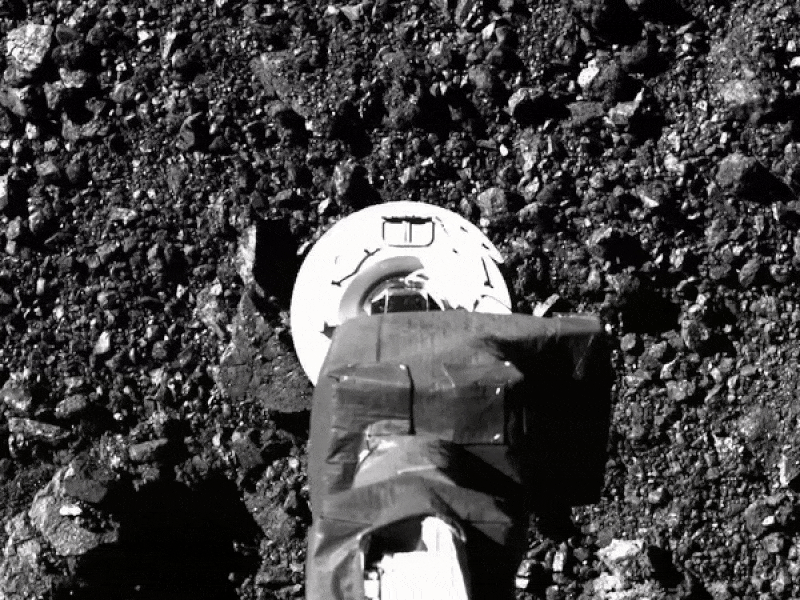Evading the celestial police, one Italian monk ushered in the golden age of asteroidal discovery. Once thought the remnants of a long-lost planet, asteroids are now known to have been the ingredients in the cosmic confectionaries we call planets. Though their shadows have revealed a variety of asteroids, scientists will soon get their hands on fragments of these faraway finds.
The Generation of Jefferson and Giuseppe
In 1801, just after Thomas Jefferson was elected president, an Italian monk pointed his telescope toward Taurus and completely revolutionized our understanding of the Solar System. Gioacchino Giuseppe Maria Ubaldo Nicolò Piazzi was born in 1746 and joined the Teatine order at the tender age of 19. After being appointed Chair of Mathematics at the University of Palermo, Piazzi was also named Chair of Astronomy, despite having no astronomical experience.
His appointment came at an auspicious time: astronomers back to Kepler had suspected, for philosophical (but erroneous) reasons, there must exist a planet between Mars and Jupiter. In late 1800, astronomers across Europe formed a cooperative they called the “Celestial Police” to find the planet. Totally unaware of those plans, Piazzi conducted his own search and, on January 1, 1801, spotted a “star-like” object (the word “asteroid” means “star-like”). Subsequent observations showed parallactic motion, meaning it was not a star but was Ceres, the first asteroid.
If You Wish to Make an Apple Pie from Scratch, You Must First Invent the Solar System

Astronomers initially took the discovery of the many small rocky bodies between Mars and Jupiter to confirm the long-sought planet – perhaps the planet exploded, forming the asteroids. Nowadays, astronomers believe asteroids are not the remnants of a planet but pieces of planets that never were. During the Solar System’s early history, asteroids and comets accumulated together to produce our panoply of planets, a process called planetary accretion. The asteroids we see today are the vestiges of that process, like ingredients leftover from holiday baking.
And like leftover eggs and flour, asteroids provide hints about the planetary recipe. For example, Earth has enough water to form a sphere about half the size of the Moon, but the origin of that water remains mysterious. Trying to discern its origin by just looking at the Earth is like trying to figure out a cookie recipe by eating the cookies hot from the oven – all the stirring and baking (all the geophysical activity, in Earth’s case) has obscured the ingredients. Instead, astronomers study the compositions and orbits of asteroids to piece together the water’s origin. Recent studies show that, in addition to rocky and metallic materials, many asteroids also contain lots of water trapped in minerals, and so the most current thinking is that we got our water from a combination of comets and asteroids.
Touching the (Aste)roid

If the 19th century was the golden age of asteroid discovery, then the 21st is the platinum age. Ground-based observations have revealed hundreds of thousands of asteroids since the 1800s. One of the most powerful techniques for learning about asteroids is occultation observations: when an asteroid passes in front of a bright star, the star will wink out. This simple technique, achievable by anyone with even a small telescope, clock, video camera, and clear sky, has revealed the sizes of some asteroids and even asteroidal rings.
But observing asteroids from afar isn’t enough for some scientists, and the American, European, and Japanese space agencies have all launched missions to reach out and touch some asteroids. Perhaps the most exciting mission right now, NASA’s OSIRIS-REx blasted the surface of asteroid Bennu with gas to release pieces of the asteroid for transport back to Earth. So much material was released, in fact, that engineers had trouble closing the sample capsule. OSIRIS-REx will return its precious cargo to Earth for analysis in late 2023.
The Centennial Observatory at College of Southern Idaho regularly observes asteroid occultations. Hear more by watching the recording of Boise State Physics’ First Friday Astronomy event from January 7 when CSI’s Chris Anderson will present “In the Shadows of Asteroids: Stellar Occultation Observations at the College of Southern Idaho”.

